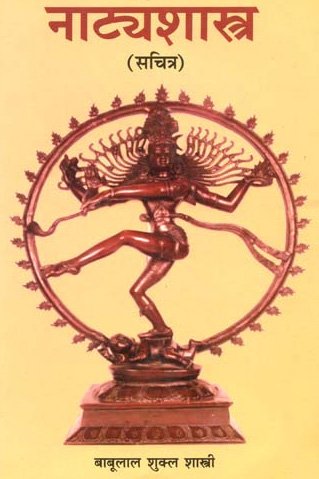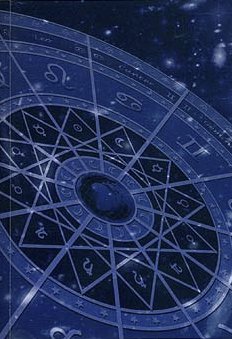Svarbhanu, Svarbhānu, Svar-bhanu: 14 definitions
Introduction:
Svarbhanu means something in Hinduism, Sanskrit. If you want to know the exact meaning, history, etymology or English translation of this term then check out the descriptions on this page. Add your comment or reference to a book if you want to contribute to this summary article.
In Hinduism
Purana and Itihasa (epic history)
Source: Wisdom Library: Varāha-purāṇaSvarbhānu (स्वर्भानु).—One of the eight rākṣasas facing the eight vasus in the battle of the gods (devas) between the demons (asuras), according to the Varāhapurāṇa chapter 94. This battle was initiated by Mahiṣāsura in order to win over the hand of Vaiṣṇavī, the form of Trikalā having a red body representing the energy of Viṣṇu. Trikalā is the name of a Goddess born from the combined looks of Brahmā, Viṣṇu and Maheśvara (Śiva).
The Varāhapurāṇa is categorised as a Mahāpurāṇa, and was originally composed of 24,000 metrical verses, possibly originating from before the 10th century. It is composed of two parts and Sūta is the main narrator.
Source: archive.org: Puranic Encyclopedia1) Svarbhānu (स्वर्भानु).—A Dānava (asura) born to Kaśyapaprajāpati by his wife Danu. It is mentioned in Mahābhārata, Ādi Parva, Chapter 67, Verse 12 that Ugrasena the father of Kaṃsa was the rebirth of this Dānava.
2) Svarbhānu (स्वर्भानु).—An son born to Śrī Kṛṣṇa by Satyabhāmā. (Bhāgavata, Skandha 10).
Source: Cologne Digital Sanskrit Dictionaries: The Purana Index1a) Svarbhānu (स्वर्भानु).—A son of Danu, and father of Suprabhā (Prabhā, Vāyu-purāṇa);1 a Daitya;2 (see Rāhu) routed Sūrya and caused him to fall on the earth when sage Atri saved him.3
- 1) Bhāgavata-purāṇa VI. 6. 30 and 32; Vāyu-purāṇa 68. 8; Viṣṇu-purāṇa I. 21. 5, 7.
- 2) Vāyu-purāṇa 1. 188; 53. 83; 68. 14.
- 3) Ib. 70. 71.
1b) A son of Satyabhāmā.*
- * Bhāgavata-purāṇa X. 61. 10.
1c) A son of Soma, also known as Budha.*
- * Brahmāṇḍa-purāṇa I. 1. 63; II. 23. 80-38.
1d) A son of Simhikā and born in Bharaṇi; vanquished the sun; his daughter Prabhā was married to Āyu.*
- * Brahmāṇḍa-purāṇa II. 24. 83-97, 137; III. 6. 8, 23-4; 8. 77; 67. 1; Vāyu-purāṇa 92. 1.
1e) Rāhu, the planet;1 has a dark chariot drawn by eight steeds;2 in the army at Tārakāmaya;3 mahāgraha left unskilled with Virocana;4 comes out of the sun and enters the moon in Parvas; then from the moon to the sun; comes out from behind and crossing the shadow of the earth forms a circle itself; its place is Bṛhadsthānam full of darkness;5 has only one ray.6
- 1) Matsya-purāṇa 128. 50.
- 2) Ib. 127. 9; Vāyu-purāṇa 52. 71.
- 3) Matsya-purāṇa 128. 62; 173. 23.
- 4) Ib. 177. 8; 178. 67.
- 5) Vāyu-purāṇa 52. 80-81; 53. 63-65; Viṣṇu-purāṇa II. 12. 21-22.
- 6) Vāyu-purāṇa 53. 88.
1f) A son of Vipracitti.*
- * Viṣṇu-purāṇa I. 21. 12.
Svarbhānu (स्वर्भानु) refers to one of the sons of Bāṇa or Bāṇāsura: the son of Bali, according to one account of Vaṃśa (‘genealogical description’) of the 10th century Saurapurāṇa: one of the various Upapurāṇas depicting Śaivism.—Accordingly, Prahlāda’s son was Virocana who was killed by Viṣṇu and his son Bali became the king. He was pious and virtuous and was bound to Pātalā by Viṣṇu. Bāṇāsura was the son of Bali, who was a devotee of Śiva. The Lord gave Bāṇāsura the status of the leader of a Gaṇa. The son’s of Bāṇa were [viz., Svarbhānu].

The Purana (पुराण, purāṇas) refers to Sanskrit literature preserving ancient India’s vast cultural history, including historical legends, religious ceremonies, various arts and sciences. The eighteen mahapuranas total over 400,000 shlokas (metrical couplets) and date to at least several centuries BCE.
Natyashastra (theatrics and dramaturgy)
Source: Shodhganga: The significance of the mūla-beras (natya)Svarbhānu (स्वर्भानु) or Rāhu refers to a planet which can de depicted using hand gestures (hasta or mudrā).—When the left hand and the right hand assume sarpaśīrṣa hasta and sūcī hasta respectively, it denotes the planet Rāhu. Rāhu is also called Svarbhānu.

Natyashastra (नाट्यशास्त्र, nāṭyaśāstra) refers to both the ancient Indian tradition (shastra) of performing arts, (natya—theatrics, drama, dance, music), as well as the name of a Sanskrit work dealing with these subjects. It also teaches the rules for composing Dramatic plays (nataka), construction and performance of Theater, and Poetic works (kavya).
Jyotisha (astronomy and astrology)
Source: Google Books: Studies in the History of the Exact Sciences (Astronomy)Svarbhānu (स्वर्भानु) symbolizes the “cause of clipses”, according to Ṛgeveda 5.40.—Accordingly, “When the demon Svarbhānu wounded you by darkness, oh Sun (Sūrya), the creatures watched as if they were bewildered, not knowing (their) place. When the demon Svarbhānu wounded the Sun by darkness, Atris found it out, because the others were unable to”.
Note: This is the only occurrence of Svarbhānu in the Ṛgveda and there is no evidence that this demon was identified as graha. In the epics, however, Svarbhānu is explicitly called ‘graha’.—(Cf. Mahābhārata 6.13.40ab)

Jyotisha (ज्योतिष, jyotiṣa or jyotish) refers to ‘astronomy’ or “Vedic astrology” and represents the fifth of the six Vedangas (additional sciences to be studied along with the Vedas). Jyotisha concerns itself with the study and prediction of the movements of celestial bodies, in order to calculate the auspicious time for rituals and ceremonies.
Languages of India and abroad
Sanskrit dictionary
Source: DDSA: The practical Sanskrit-English dictionarySvarbhānu (स्वर्भानु).—Name of Rāhu; तुल्येऽपराधे स्वर्भानुर्भानुमन्तं चिरेण यत् । हिमांशुमाशु ग्रसते तन्म्रदिम्नः स्फुटं फलम् (tulye'parādhe svarbhānurbhānumantaṃ cireṇa yat | himāṃśumāśu grasate tanmradimnaḥ sphuṭaṃ phalam) Ś.i.2.49. °सूदनः (sūdanaḥ) the sun.
Derivable forms: svarbhānuḥ (स्वर्भानुः).
Svarbhānu is a Sanskrit compound consisting of the terms svar and bhānu (भानु).
Source: Cologne Digital Sanskrit Dictionaries: Shabda-Sagara Sanskrit-English DictionarySvarbhānu (स्वर्भानु).—m.
(-nuḥ) Rahu, the personified ascending node. E. svar heaven, bhānu shining.
Source: Cologne Digital Sanskrit Dictionaries: Benfey Sanskrit-English DictionarySvarbhānu (स्वर्भानु).—m. Rāhu, the ascending node,
Svarbhānu is a Sanskrit compound consisting of the terms svar and bhānu (भानु).
Source: Cologne Digital Sanskrit Dictionaries: Cappeller Sanskrit-English DictionarySvarbhānu (स्वर्भानु).—[masculine] [Name] of a demon obscuring the sun and the moon, in [later language] = Rāhu.
Source: Cologne Digital Sanskrit Dictionaries: Monier-Williams Sanskrit-English Dictionary1) Svarbhāṇu (स्वर्भाणु):—[=svar-bhāṇu] m. = -bhānu id est. Rāhu, [Hemacandra’s Pariśiṣṭaparvan]
2) Svarbhānu (स्वर्भानु):—[=svar-bhānu] m. (svar-) Name of a demon supposed to eclipse the sun and the moon (in later language applied to Rāhu or the personified ascending node), [Ṛg-veda] etc. etc.
3) [v.s. ...] of a Kaśyapa, [Viṣṇu-purāṇa]
4) [v.s. ...] of a son of Kṛṣṇa, [Bhāgavata-purāṇa]
Source: Cologne Digital Sanskrit Dictionaries: Yates Sanskrit-English DictionarySvarbhānu (स्वर्भानु):—[svar-bhānu] (nuḥ) 2. m. Rāhu.
[Sanskrit to German]
Sanskrit, also spelled संस्कृतम् (saṃskṛtam), is an ancient language of India commonly seen as the grandmother of the Indo-European language family (even English!). Closely allied with Prakrit and Pali, Sanskrit is more exhaustive in both grammar and terms and has the most extensive collection of literature in the world, greatly surpassing its sister-languages Greek and Latin.
Kannada-English dictionary
Source: Alar: Kannada-English corpusSvarbhānu (ಸ್ವರ್ಭಾನು):—[noun] (astrol.) the planet Rāhu.
Kannada is a Dravidian language (as opposed to the Indo-European language family) mainly spoken in the southwestern region of India.
See also (Relevant definitions)
Starts with: Svarbhanushatru, Svarbhanusudana.
Full-text (+15): Svarbhanavi, Prabha, Svarbhanusudana, Svarbhanava, Svarbhanaviya, Suprabha, Rahu, Atmaja, Putradharma, Brihatsthana, Upadani, Sutahotra, Mradiman, Subhanu, Varshaparvani, Dharmavriddha, Pratibhanu, Hayashira, Nahusa, Banasura.
Relevant text
Search found 22 books and stories containing Svarbhanu, Svarbhānu, Svar-bhanu, Svar-bhānu, Svarbhāṇu, Svar-bhāṇu; (plurals include: Svarbhanus, Svarbhānus, bhanus, bhānus, Svarbhāṇus, bhāṇus). You can also click to the full overview containing English textual excerpts. Below are direct links for the most relevant articles:
Rig Veda (translation and commentary) (by H. H. Wilson)
The Skanda Purana (by G. V. Tagare)
Chapter 50 - Greatness of Rāhvīśvara (Rāhu-īśvara) < [Section 1 - Prabhāsa-kṣetra-māhātmya]
Chapter 38 - The Position of the Higher World < [Section 2 - Kaumārikā-khaṇḍa]
Chapter 20 - Creation of the Moon < [Section 1 - Prabhāsa-kṣetra-māhātmya]
Harivamsha Purana (by Manmatha Nath Dutt)
Chapter 28 - An Account of Raji and His Sons < [Book 1 - Harivamsa Parva]
Chapter 3 - An Account of Various Families; Daksha’s Offspring < [Book 1 - Harivamsa Parva]
Historical Elements in the Matsya Purana (by Chaitali Kadia)
Lineages of Kaśyapa < [Chapter 6 - Human history in the Matsya-Purāṇa]
The Garuda Purana (by Manmatha Nath Dutt)
Chapter LXVI - Description of the specific marks of Salagrama < [Agastya Samhita]
Chapter VI - Re-incarnation of Daksha in the form of Prachetas < [Agastya Samhita]
Chapter LVIII - Positions and dimensions of the sun and other planets < [Agastya Samhita]
Puranic encyclopaedia (by Vettam Mani)